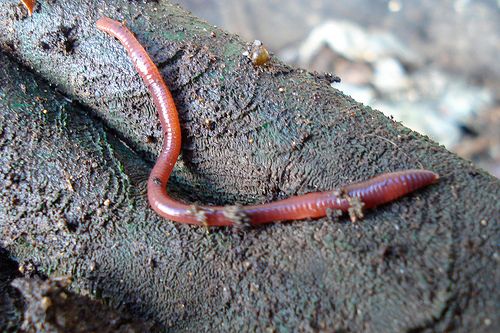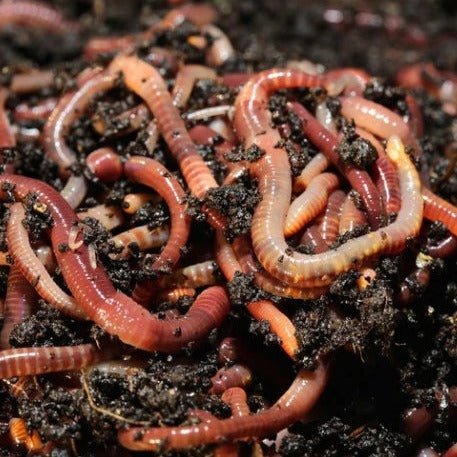Professional Lawn Care Services Powered by Lake Hickory Bait for Stunning Results
Red Wigglers: The Unsung Heroes of Organic Waste Recycling
Red wigglers, or Eisenia fetida, offer as vital agents in the natural waste reusing process, changing disposed of products into valuable vermicompost. As the globe progressively seeks remedies to deal with waste build-up and improve farming efficiency, understanding the duty of these worms ends up being essential.
What Are Red Wigglers?
The impressive durability of red wigglers, scientifically recognized as Eisenia fetida, highlights their crucial duty in organic waste recycling. These tiny, reddish-brown earthworms are usually found in decaying raw material, such as compost piles and manure loads. Lake Hickory Bait. Unlike other earthworm varieties, red wigglers flourish in nutrient-rich settings and are extremely reliable at breaking down natural materials, making them crucial for vermicomposting

(Red Wiggler Express)In addition to their function in waste decrease, red wigglers add to soil health by enhancing dirt framework and oygenation via their burrowing activities (Lake Hickory Bait). Their presence in composting systems not just enhances decomposition rates however likewise promotes a sustainable approach to waste administration, illustrating their significance in ecological conservation efforts
Advantages of Composting With Worms
Composting with worms, particularly red wigglers, provides various benefits that improve both waste management and soil health. These worms effectively damage down organic waste, transforming it right into nutrient-rich vermicompost that improves soil. This procedure increases decay, allowing for a much faster recycling of kitchen scraps and other natural materials compared to typical composting methods.
Furthermore, the vermicompost created by red wigglers is teeming with valuable microorganisms, which aid boost soil structure, oygenation, and dampness retention. This enhances the total wellness of plants, advertising vigorous development and increased returns in yards and farming settings. Additionally, making use of worms in composting decreases the production of greenhouse gases, such as methane, contributing to a much more lasting waste monitoring system.

Exactly How to Begin Vermicomposting
Establishing a vermicomposting system is a simple procedure that can yield significant advantages for both waste monitoring and dirt enrichment. To begin, select an ideal container, such as a plastic bin or wood box, with ample air flow openings to make sure appropriate air flow. The measurements need to preferably be around 2 feet by 3 feet, permitting sufficient area for the worms to flourish.
Next, prepare bed linens material, which can include shredded newspaper, cardboard, or coconut coir. This bed linen needs to be dampened to develop an appropriate environment for the worms. As soon as the bed linens remains in area, present red wigglers (Eisenia fetida) into the container, normally around one pound of worms for each square foot of surface.
Complying with the placement of worms, add natural waste, such as fruit and vegetable scraps, coffee premises, and crushed eggshells. Stay clear of read the article including dairy, meat, or oils, as these can produce smells and attract pests. Place the bin in a shaded, temperature-controlled location to preserve optimum problems for worm task. With these steps, you will effectively start a vermicomposting system that adds to sustainable waste management and enriches your dirt.
Keeping a Healthy And Balanced Worm Bin
(Lake Hickory Bait)Keeping a worm container thriving needs normal attention and like make sure the health of the red wigglers and the performance of the composting procedure. Proper upkeep begins with keeping an eye on the dampness levels; the container must perspire but not soaked. An excellent guideline is to preserve a consistency similar to a wrung-out sponge.
Oygenation is vital. Carefully mixing the bed linen and food scraps every couple of weeks avoids compaction and guarantees that all worms have access to oxygen. Additionally, it is very important to feed the worms suitably. A balanced diet regimen of vegetables and fruit scraps, coffee premises, and crushed eggshells must be supplied in moderation to prevent overfeeding, which can bring about smells and insects.
If the bin comes to be also hot or cool, the worms might end up being stressed out. By carefully handling these factors, one can preserve a robust and productive worm container.
Influence On Sustainable Living
The successful upkeep of a worm bin not just profits the health of red wigglers but also contributes considerably to lasting living techniques. By reusing natural waste, such as kitchen area scraps and backyard particles, red wigglers aid divert significant amounts of product from land fills. This decrease in waste not only reduces greenhouse gas discharges yet additionally reduces the environmental problem related to waste management.
Additionally, the spreadings produced by red wigglers work as a nutrient-rich natural fertilizer, enhancing dirt wellness and promoting plant development. This all-natural alternative to chemical fertilizers sustains sustainable farming and gardening practices, minimizing reliance on artificial inputs that can damage communities. In addition, worm composting cultivates recognition of waste monitoring, motivating people and communities to embrace even more sustainable practices.

Verdict
In recap, red wigglers serve as essential contributors to natural waste reusing with their efficient decomposition of natural materials. By integrating vermicomposting right into waste monitoring techniques, people and neighborhoods can dramatically reduce waste while advertising environmental sustainability.